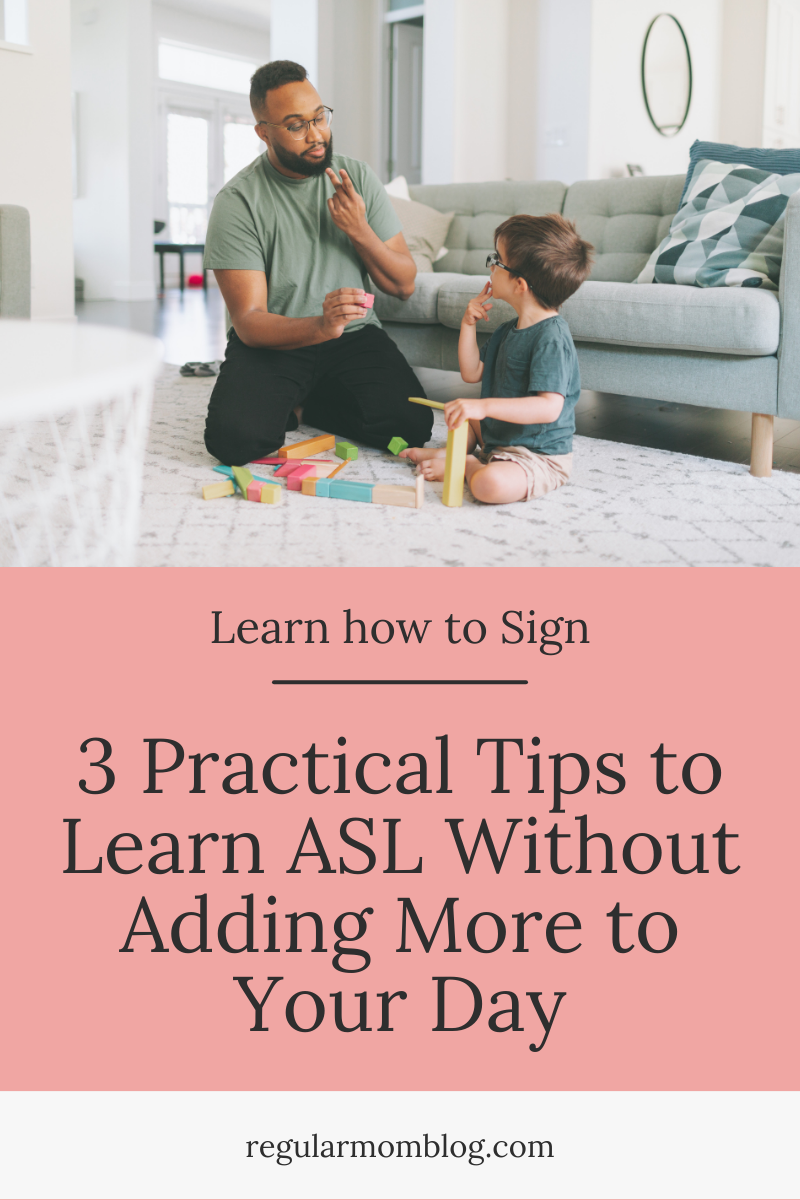advocacy
It’s time to get clear on a language strategy for your child so that you can consistently practice language in your home and watch your child’s communication soar in less time!
Welcome!
I want to show you how to build better language skills at home so you can also parent with clarity and confidence!
Categories
hearing loss
sensory activities
sign language
1:1 Language Coaching
These are the kinds of resources that you will find on my blog!
Happy reading!
3 Practical Tips to Learn How To Sign Without Adding More to Your Day
March 29, 2023
Starting to learn how to sign can be a daunting task. Moms have a lot on their plates every day, and learning how to sign ASL can be hard to fit into the million other things you do during the day!
I want to encourage you today that you don’t have to jump into learning the full language of ASL all at once.
You can start to learn how to sign today without taking up more time in your schedule.
This blog post will give you 3 easy, actionable steps where you can start to learn how to sign, and incorporate ASL as a natural part of your daily routine.

LEARN 1-2 SIGNS PER WEEK
The first step is to stop overwhelming yourself with too many signs at one time! ASL is just like learning any new language. You start building up your vocabulary, word by word. Eventually the words become sentences, and you keep building your language knowledge from there.
I find it easier to start with learning 1-2 signs per week. Pick 1-2 signs that help communicate a part of your regular, daily routine. For example, if you are potty training your child, then the sign for “potty” would be good to learn. If your child needs more communication around meal time, pick a couple of their favorite food items and learn the signs. The idea is to start with signs that you will use a lot during the day. I highly recommend the ASL pocket sign app to learn new signs. It’s free to use and will visually show you the ASL sign for any word or phrase.
USE THE SIGNS A LOT IN THE WEEK
Once you pick your signing goals for the week, now it’s time to practice! Kids and adults learn languages by immersion, so immerse yourself and your family in those signs for that week! If you picked the sign for “potty” in the above example, then use that sign EVERY time you talk about the potty that week. Even if you are just signing to yourself. The more you use the sign, the more you commit it to memory.
It’s important to note that you are using the signs as part of your normal daily routine. You aren’t setting aside separate time to work on these (unless you want to!), but you are just using the signs as they come up in your normal day.
REPEAT EACH WEEK WITH NEW SIGNS
Now it’s time to build your vocabulary! Repeat the same process the next week, and pick 1-2 DIFFERENT signs to learn. Use those signs EVERYWHERE in the week. Repeat the process the next week. Keep using the signs from the week before, but incorporate the new signs as well. Before you know it, you will have built an entire library of ASL vocabulary that you and your family are actively using!
This process works to learn any language. In fact, it is the exact formula that I used to become fluent in Spanish when I was just in high school, and then I became a high school Spanish teacher! It was such an effective way to learn a language, that I incorporated the same process into our home to learn to sign ASL. Learning to sign helped our boys communicate important parts of their daily routine that they didn’t know how to talk about yet. This cut way down on frusteration levels and tantrums because our kids could communicate their wants and needs to us. Give it a try with your family!
Don’t forget to sign up to Teach Your Kids to Sign!
more asl resources

tell me more!
tell me more!
@alemerinobranding.co
DESIGNED BY: ALE MERINO BRANDING CO.
COACHING
Navigation
PODCAST
ABOUT
HOME
Legal
PRIVACY POLICY
TERMS & CONDITIONS
Let's connect
EMAIL hello@raisingdeafkids.com
BLOG
[…] to learn some ASL sign language to prepare for cochlear implants? Read my blog post about how to learn ASL without adding more to your […]
[…] Our two kids with cochlear implants have different levels of hearing. One of them uses just spoken language, and the other uses a combination of spoken language and ASL signs. However, at gatherings we have found it helpful to learn a few key signs beforehand, such as “more”, “yes”, “no”, “please”, “all done”, “go”. In this way your child with cochlear implant can communicate their needs with you even if the gathering is loud or they are on the opposite side of the room from you. This will decrease their frustration level during the gathering. For tips on learning ASL without adding more stuff to your day, read my blog post here. […]
[…] Want to learn ASL but feel too overwhelemed? Here are 3 Practical Tips to Learn ASL Without Adding More to Your Day […]
[…] Think you don’t have time to learn ASL, or it seems overwhelming? I wrote a whole blog post to help you learn how to sign without adding more to your day. […]